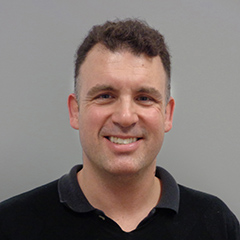In November, we recognized American Indian and Alaska Native Heritage Month with a post on our work with Native societies to shine a light on pressing issues in child welfare, early childhood education, family support, mental health, and substance use. Through a culturally responsive approach that includes methods informed by community-based participatory research, we work with tribal communities as full and equal partners in designing studies; collecting data; and analyzing, disseminating, and applying results. This process reduces the distinction between researcher and researched and shifts the conversation from research on a population to research with them.
Culturally responsive research recognizes culture as central to the research process. It helps us design and conduct research that acknowledges the way that culture permeates everything we do as individuals, including the decisions we make when designing, conducting, and analyzing the results of research. Seeking to redress power imbalances through culturally responsive research approaches gives us the confidence to approach complex problems with clarity and purpose to find out what can be done, how to make it happen, and where to go next. Here, we reflect on what we’ve learned employing principles of culturally responsive research and how it’s inspired us to bring new a perspective to all of our work at Mathematica.
- Adopt a culturally humble attitude. In all stages of the process, the research and data collection teams must be humble and open. This entails constantly reflecting on our own biases and privilege, being open to the culture and reality of others, and showing a willingness to listen and continually learn. In our work with tribal communities, we learn to quiet down our own agendas, focus on showing our authentic self, and be truly present—not always easy in the task-oriented world of data collection, in which project budgets and timelines impose constant pressure to keep on task or risk falling behind. Instead, we try to honor the process of collaboration and allow the journey to unfold. Identifying and honoring cultural protocols and Indigenous ways of knowing is paramount to building trust. We often facilitate collaboration and engagement through tribal advisory groups or workgroups that foster intergroup dialogue through all phases of the research. We work with stakeholders to create memorandums of understanding or agreements of collaboration that act as a roadmap to a shared commitment to work that benefits all involved. And we’re transparent about what we don’t know. For example, when meeting with communities we partner with, we make sure to ask questions: How would you like to be addressed? How should we interact with your staff—in a quiet or average tone of voice? Should we engage in social conversation, make eye contact, or shake hands? How should we dress? Asking these questions builds a collaborative relationship. Through these and other processes, we build trust and create room for bidirectional learning.
- Expand data collection time to respect cultural protocols. We train our data collectors to be courteous and respectful and to build rapport with tribal communities. Allowing data collectors more time to pause and introduce themselves in a meaningful way in accordance with local cultural protocols sets forth a path for a good working relationship. This might mean taking time to introduce themselves fully, to explain where they come from and who their relatives are, or to share personal stories. As a result, we budget for extended timelines and train data collectors and staff not to impose their culture or notions of time. Through rigorous training and constant communication and reflection, our teams learn to let go of what we want for the study tasks at hand. This way, teams can focus on a collaborative, iterative process of becoming rather than reaching the end point. As Nina Wallerstein and Bonnie Duran, advocates for community-based participatory research, write, “Participation should not be seen as a magic bullet but as a complex and iterative process, which can change, grow, or diminish, based on the unfolding of power relations and the historical and social context of the research project.”
Ultimately, we can gather necessary data in a much more respectful and beneficial way. Moreover, we can work with communities to share data in ways that are more useful and contribute to bolstering tribal self-determination, data sovereignty, and capacity building efforts. The research process becomes more of a collaboration in which we’re able to make progress together on identifying and improving upon the outcomes that matter most to the communities. With the help of tribal communities, we’ve learned to use storytelling as a framework for culturally responsive research and evaluation.
- Acknowledge the role of culture and history in research. Culture is a part of research, and so it can be a disservice to our research if it is culturally neutral. It’s necessary to understand the local culture before interacting and visiting a community; otherwise, we risk offending and losing the opportunity to build trusting relationships. We also miss the opportunity to gain a fuller understanding of how specific communities define and view the issues that they are trying to solve. For example, thoughtfully designing or evaluating interventions for issues such as suicide or substance use prevention in Indian Country require first understanding local conceptions of health, wellness, and healing. We cannot assume that tribal communities define and intervene upon suicide or substance use the same way western society does. It is also important to bring an awareness of the concept of historical and intergenerational trauma, how historical oppression of Native tribes continues to affect communities today, to collect data in a culturally appropriate way.
- Engage communities to help ensure research is actionable. By incorporating culturally responsive research methods, we have a better chance of developing actionable research. Community engagement throughout the research process often increases local investment, and community members become research stakeholders rather than research subjects. They’re engaged in formulating research strategies, collecting data, and interpreting findings in actionable ways.
We strive to equitably involve all partners in the research process and to recognize the unique strengths that each one brings. For example, we should research topics that are important to the community even though they might be different from what we think is important as researchers. One of the barriers to working with Indigenous populations are concerns that existing measures won’t capture the unique experiences of their communities, so the need to collaborate by obtaining input from multiple stakeholders within the community is paramount. We must be aware of how questions, answers, and outcomes of research mean different things to different people. We always receive a lot of input into everything we do, but conducting culturally responsive research requires us to go further. We have to ensure that we bring the perspectives of the communities we study into the research process and planning stage. For Mathematica, this means moving beyond just partnering with communities—we must make sure diversity is represented here at our company. This strengthens our mission to improve public well-being by truly understanding, engaging with, and also representing the communities we hope to serve.




